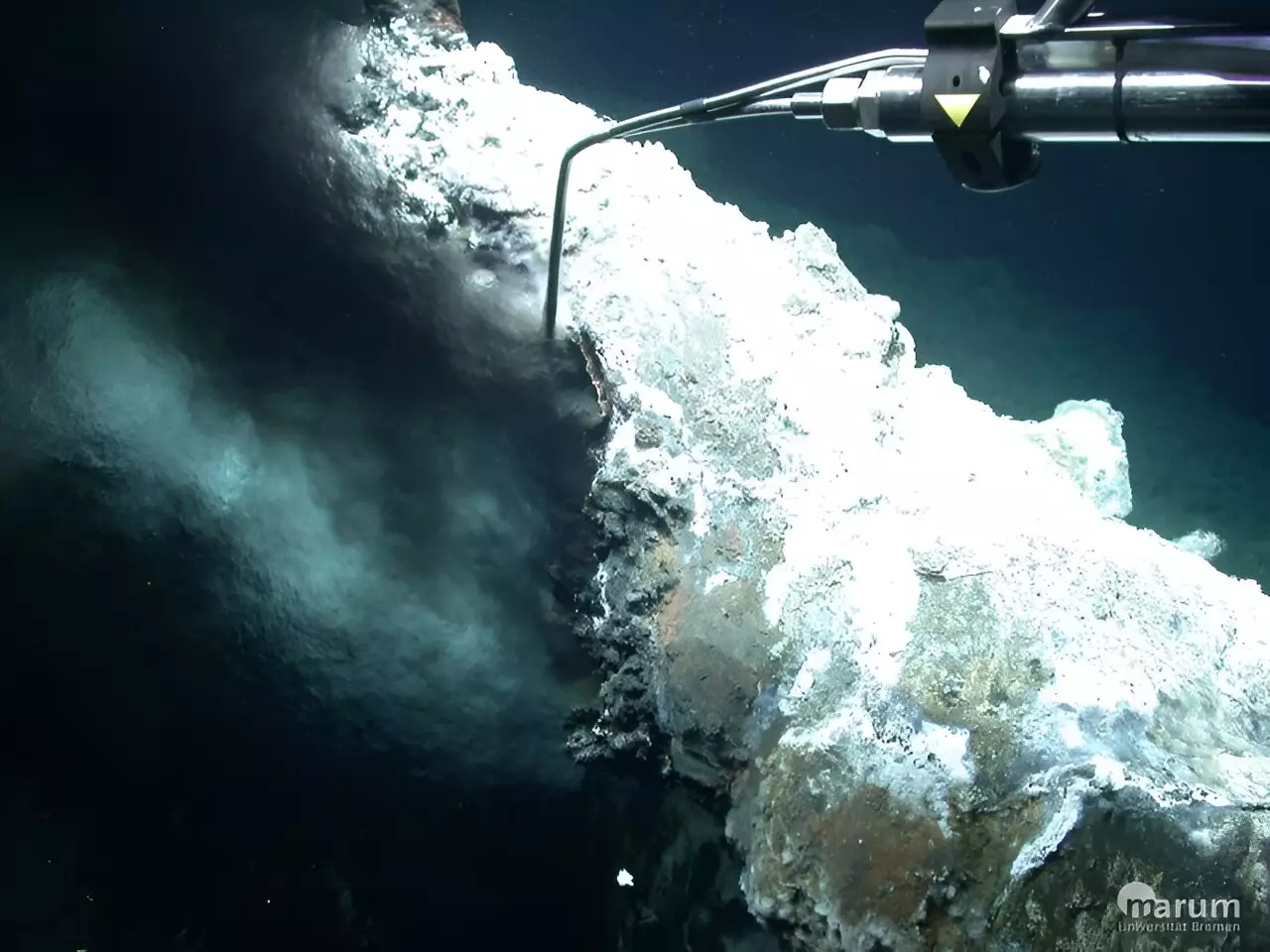In the world of oceanic exploration, hydrothermal vents are a fascinating and relatively unexplored phenomenon. These vents, which can be found at the junctions of drifting tectonic plates, have been a subject of interest for scientists for many years. While there are many known hydrothermal fields around the world, there are still many waiting to be discovered. It was during a 2022 expedition of the MARIA S. MERIAN that the first field of hydrothermal vents on the Knipovich Ridge off the coast of Svalbard was discovered. Led by Prof. Dr. Gerhard Bohrmann of MARUM, an international team of researchers from Bremen and Norway made this groundbreaking discovery.
Named after a giant in Nordic mythology, the Jøtul Field is located on the 500-kilometer-long Knipovich Ridge. This ridge, situated within the triangle formed by Greenland, Norway, and Svalbard, lies on the boundary of the North American and European tectonic plates. As a slow spreading ridge with a growth rate of less than two centimeters per year, the Jøtul Field presents a unique opportunity for research, as very little is known about hydrothermal activity in such environments.
One of the key findings of the expedition was the high concentrations of methane detected in the fluid samples from the Jøtul Field. This has significant climate implications, as methane emissions from hydrothermal vents can contribute to ocean acidification and climate change. Methane, when converted into carbon dioxide as it travels through the water column, can increase CO2 concentrations in the ocean and interact with the atmosphere. The precise amount of methane escaping into the atmosphere from the Jøtul Field is still unknown and requires further study.
Exploration of Chemosynthetic Organisms
Another area of interest in the Jøtul Field is the study of chemosynthetic organisms that thrive in the harsh conditions around hydrothermal vents. In the absence of sunlight, these organisms rely on chemosynthesis, a process where they use chemicals from the hydrothermal fluids as a source of energy. This symbiotic relationship with bacteria allows these unique organisms to survive and thrive in the extreme environment of the deep ocean. Further research is needed to understand the diversity and functioning of these organisms in the Jøtul Field.
To expand on the initial findings and explore new areas of the Jøtul Field, a new expedition led by Gerhard Bohrmann is set to begin in late summer of this year. This expedition aims to gather more data on the hydrothermal activity, methane emissions, and the biodiversity of the area. By comparing the Jøtul Field with other known hydrothermal fields in the Arctic region, such as the Aurora Field and Loki’s Castle, researchers hope to gain a better understanding of the unique characteristics of this newly discovered site. The Jøtul Field will serve as a crucial object of study for future research in the field of hydrothermal vent exploration.


Leave a Reply